
Publisher:
Bonnie King
CONTACT:
Newsroom@Salem-news.com
Advertising:
Adsales@Salem-news.com

~Truth~
~Justice~
~Peace~
TJP
Sep-03-2012 22:20

 TweetFollow @OregonNews
TweetFollow @OregonNews
The Dialectics of a Genocide (Graphic Photos of war crimes!)
Meena Kandasamy Special to Salem-News.com“When I first escaped, I decided to stop writing. I did not want to ever write again” - Lokeesan, TamilNet
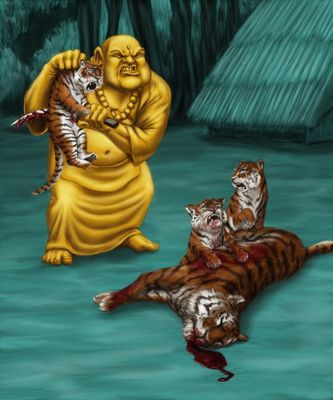 |
(CHENNAI, India) - The Fourth Eelam War IV ended in May 2009 and marked the decimation of the Tamil Tigers. By the end, this genocidal massacre claimed between 40,000 and 100,000 civilian lives.
In June this year, I had the opportunity to interview TamilNet.com’s chief correspondent in the Vanni, Lokeesan who stayed on in Mullivaaikkal until a few weeks before the end of the war. He is now an aslyum-seeker, in a European country.
My friends have warned me against extracting a feminist impression of the war, and yet, my first question to Lokeesan is about how the war was specifically brutal to Tamil women.
“I am surprised that you ask this question.” he says.
“The Government of Sri Lanka would declare No Fire Zones (NFZs) and ruthlessly bomb these proclaimed safe zones. If this is how they reacted with regard to civilians, why do you expect civility from them when it comes to women?”
It is common knowledge that women who surrendered to the Army or got captured, were subject to rape. Tamil women were never accorded respect by Sinhala society, especially by the Sri Lankan Army.
In the last days of the war, thousands of incidents of violence and rape took place against Tamil women. It hurts to say this, but what happened to Isaipriya, the rape, and the murder and the violation, happened to thousands of women in the Vanni.” Lokeesan says.
Lokeesan worked for TamilNet.com, a news website blocked in Sri Lanka for exposing the atrocities of the Government and presenting the Tamil side of the story.
I first heard about Lokeesan's struggle and subsequent escape from the war-torn island in Beate Arnestad's moving documentary Silenced Voices about Sri Lankan journalists in exile.
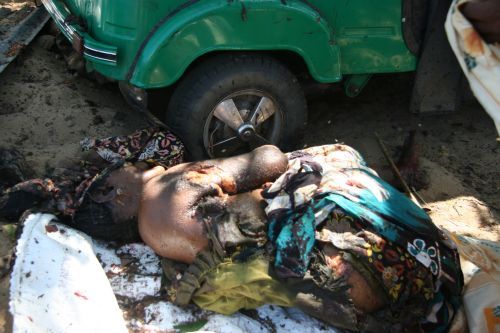
It featured interviews with Sonali Samarasinghe, the widow of assassinated Sunday Leader editor Lasantha Wickrematunge, Bashana Abeywardane and his wife Sharmila Logeswaram.
“How different was your work, from the kind of reporting that Lasantha, or any of the dissenting Sinhala journalists were doing?” I ask him.
"Lasantha had all the facilities available to the media – internet, phone, email, camera, everything. But where we worked, we could not even charge our laptops. In the South, they were spared such horrors. They never had to dwell in death, whereas we worked in an area where it was impossible to operate.
To understand my situation, you have to remember that the Vanni never had telephonic connectivity to begin with. In thirty years, I never saw electricity. We were living in prehistoric times, like in the days when messengers and couriers carried news.
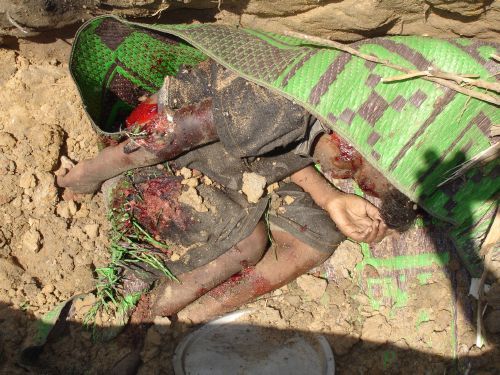
After 2005, no fuel was provided. Even hospitals functioned with these difficulties. From late 2008, there was no agricultural activity. During the war, even a thousand rupees could not buy you a kilo of rice. The LTTE procured fuel through the fisher-people.
Newspapers used to be published with power from generators. The supply of medicine was totally stopped. Only 10 to 15 percent of the required medicine required was provided through the ICRC. Vanni was a dark country cut away from the whole of existence.
You cannot calculate the body count based on my reports alone. Because of the difficulty in verifying facts, I tended to report only what I witnessed.
While I kept telling the world about deaths among the Vanni people, I learnt that the world wanted to remain blind, deaf and numb. Everything happened within a 7-10 km stretch of the Vanni, the world could have easily seen this through satellites. The world did not want to save us. We were entrusted to our killers.
The world acted for its own greed, for its own needs, though it publicly spoke of human rights. If 150 people died and 500 were injured in a single attack, I would report the same to TamilNet.com. For the next two, three days there would be a lull. They would hesitate and stop these mass civilian attacks briefly. But the world’s outrage was not potent enough.
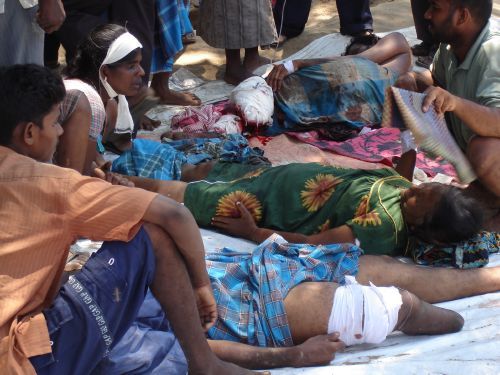
In the last days, there was no water for the injured and the dying. There was no cloth to tie the bleeding wounds of the bombed.”
There is a long, uncomfortable silence.
“I know how this world functions. If I had died in Lasantha’s place, nobody would have questioned Gotabaya (Rajapakse) about it. They would have called me a Tiger.
The local Tamil media continued to exist. Puligalin Kural (Voice of Tigers, a radio) and Eelanaatham paper existed up to a few days before the end of the war. But it was the Army's plan to run a war without any witnesses. They did not even allow Sinhala journalists to witness or document the war. They were not allowed into the Vanni.
If a dozen civilians died in an SLAF bombing, I would report it directly. There was no Sinhala media there. The Sri Lanka Defence website was the only one but it said that these bombings had targeted a Tiger camp. At that time, the world did not believe us. Now, the stories prove otherwise.
Everyone had a camera phone, so the truth came out because of the Sinhala soldiers. The Sri Lanka Army is not a disciplined fighting force. They are ‘proud’ of what they did, so they shot trophy videos. They wanted to display what they achieved. Only when these videos reached the hands of conscientious Sinhalese and Tamils, when it reached Channel 4, did the real story of war come out.”
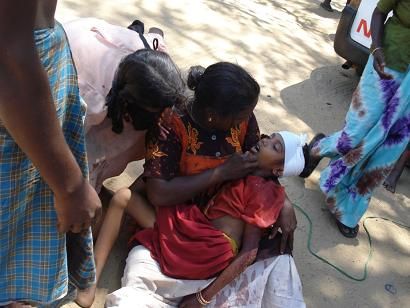
Lokeesan further laments the honours heaped on Sri Lankan military officials who led the genocide.
“Major General Jagath Dias, who led the 57th Division that shelled hospitals in the Vanni was appointed Vice Ambassador to Germany and later Switzerland. Major General Shavendra Silva, who headed the 58th Division that shot dead the Tigers surrendering with white flags, is now the Deputy Permanent Representative to the United Nations.
Sri Lanka Navy's Admiral Thisara Samarasinghe, who has been clearly indicted in the UN panel report for shelling carried out by the Navy into No Fire Zones during the final phase of the war, has been appointed Ambassador to Australia.”
Tired of tabulating this list, he breaks off.
“There is another reason why Sri Lanka’s war commanders are kept outside. If these monsters remain in the country, their bloodthirsty nature could destabilize the state. They have been totally dehumanized. They have been told it is perfect to slaughter and annihilate people. Also, if Shavendra Silva was in Sri Lanka, he could be blamed, he could be brought to book for war crimes.
But if he is in the United Nations, it is not easy to point fingers at him. He will show the world that no war crime took place. He will continue telling everybody that nothing untoward happened, the war was perfect, the army was well-behaved – you know, those kinds of things. They drank the blood of thousands of Tamil children. Now they enjoy diplomatic immunity.”
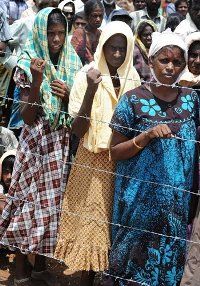
His narratives of the war, his memories centre around children. Children undergoing amputation without anaesthesia, children dying from hunger, children bleeding to death from shrapnel injuries, children clinging to the breasts of dead mothers.
He shows me videos that he shot in the Vanni: small children lamenting their dead parents, children carrying their injured or dead siblings, children hollering into a world that has ceased to hear. They still haunt him.
Lokeesan talks of how he overcame hostility and jealousy of other Tamil media institutions on ground, including those run by the LTTE. He had to fight off pressure to include their reportage, and managed to fend off the propagandists, and yet the “Tiger” label has persisted.
“I think reporting about the war is a burden. But it is also a responsibility. Every day, I saw hundreds of people die. From late 2008 onwards, there was no difference between the battlefield and the civilian area. The cluster bombs for instance, detonated 15-20 feet above the ground level. Everyone standing was left dead. Scores of cattle died at the same time. The SLAF would drop more than 40 thousand kilos of bombs in the Vanni. These airshot bombs are meant for warfare on mountainous terrain, not for killing civilians. They started using cluster bombs with a vengeance because of their losses on the battlefield. Though it was referred to as a war against the Tigers, it was effectively a war against the Tamil people. They even circulated false information that only 70,000 people were there in the Vanni. Pranab Mukherjee was the highest ranking person who made this claim. It was part of their plan that only 70,000 of the 400,000 people should be allowed to survive the war. But people’s survival skills and self defence reduced the deaths.”
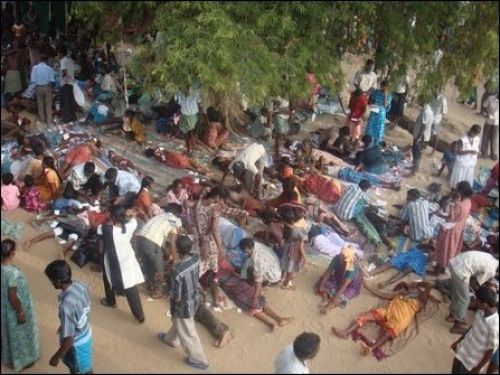
Perhaps this tenacity explains why 2,94,000 Tamils— and not the projected number of 70,000— ended up in the army camps even as per Sri Lanka’s official estimates.
I point out, “But it is said that Tigers held the civilians as human shields, and shot innocent civilians who got into military convoys.”
He is quick to respond, “I have never witnessed this. But I have always been asked this question. One has to understand that the Sri Lanka Army had infiltrated the Tigers as well. They had a force called LRRP (Long Range Reconnaissance Patrol). They were responsible for claymore attacks that killed the top leadership.
They were known as the demon brigade because they impersonated the Tigers to carry out their operations. They were responsible for the Ambulance attacks. They killed K Sivanesan, the Tamil Member of Parliament from Jaffna.
So, these incidents of shooting the civilians could have been carried out by the Sri Lankan armed forces, wearing Tiger uniforms. Also, Tigers were coerced into becoming informers for the Army. I do not rule out the possibility of these incidents, but since I did not witness anything like that, I can only surmise.”
Does he believe, as Tamil nationalists do, that India was waging a proxy war against the Tigers?
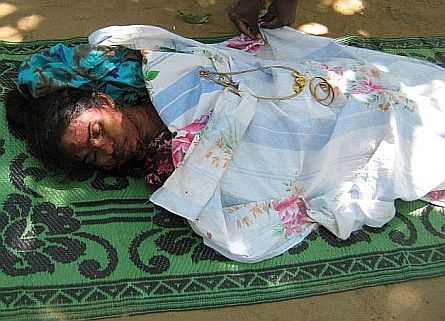
“When LTTE attacked the Vavuniya JOSSOP (Joint Services Special Operation) camp, Army headquarters in the Vanni in 2008, Indian military personnel operating radars for Sri Lanka Air Force were injured. This exposed India’s hands-off policy. The military victory was possible only because of inputs and active help from imperialist world powers. Those who secretly supplied weapons to Sri Lanka were more dangerous than those who supplied weapons publicly.
India has stood at the forefront, annihilating Eelam Tamils. In the refugee camps, there are 20-year-old children who’ve never seen their homeland. When I was there, Eelam Tamils were on a protest-fast,” he says.
His own personal experience in India has left him embittered.
“We had to go to New Delhi for a visa. We were asked to wait for a week. My son was only three months old, he had survived a thirty-hour train journey from Chennai. A taxi driver took us to every hotel but we were refused accommodation because we were Eelam Tamils. It was impossibly cold.
My son cried uncontrollably.
No one took pity on us. A lady at the embassy gave an apple to my wife when she saw how distraught and tired we were. She even spoke to a hotel she knew, but they refused to take us in. This incident showed me the reality of being an Eelam Tamil in India. You were nothing but a terrorist in the eyes of the Indian state. Today, the world exalts the media. But in India, I knew that being a journalist from Tamil Eelam was worthless. I was only seen as a criminal.”
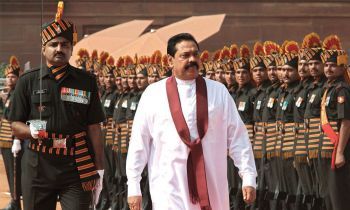
At present Lokeesan is working on his eye-witness account of the war. “When I first escaped, I decided to stop writing. I did not want to ever write again,” he says.
He then tells me of his most fulfilling project, a series he did on Tamil Tigers serving at the Forward Defence Lines.
Can we find copies? In libraries, with private collectors, or at least at some NGO office?
“No.” He says firmly. “When Vanni was destroyed, everything in it was destroyed. They did not allow anything from the past to remain.” He consoles himself. “I remember almost all of what I wrote.”
I quote Kundera: “The struggle of man against power, is the struggle of memory against forgetting.”
He stays silent and I lack the courage to look into his eyes.
Few days before I leave Europe, we meet for lunch at a tiny cafe opposite his office. His project co-ordinator is with us. When the buzzer beeps, Lokeesan and I go to fetch our plates.
“This is heavy. Can you carry two plates at once?” I ask him.
“For years, I have carried my home in these hands,” he says.
kindlemag.in/srorys_details.php?id=NDU1&#
 |
 |
 |
 |
 |
 |
 |
Articles for September 2, 2012 | Articles for September 3, 2012 | Articles for September 4, 2012

Quick Links
DINING
Willamette UniversityGoudy Commons Cafe
Dine on the Queen
Willamette Queen Sternwheeler
MUST SEE SALEM
Oregon Capitol ToursCapitol History Gateway
Willamette River Ride
Willamette Queen Sternwheeler
Historic Home Tours:
Deepwood Museum
The Bush House
Gaiety Hollow Garden
AUCTIONS - APPRAISALS
Auction Masters & AppraisalsCONSTRUCTION SERVICES
Roofing and ContractingSheridan, Ore.
ONLINE SHOPPING
Special Occasion DressesAdvertise with Salem-News
Contact:AdSales@Salem-News.com


Salem-News.com:

Terms of Service | Privacy Policy
All comments and messages are approved by people and self promotional links or unacceptable comments are denied.
[Return to Top]
©2025 Salem-News.com. All opinions expressed in this article are those of the author and do not necessarily reflect those of Salem-News.com.